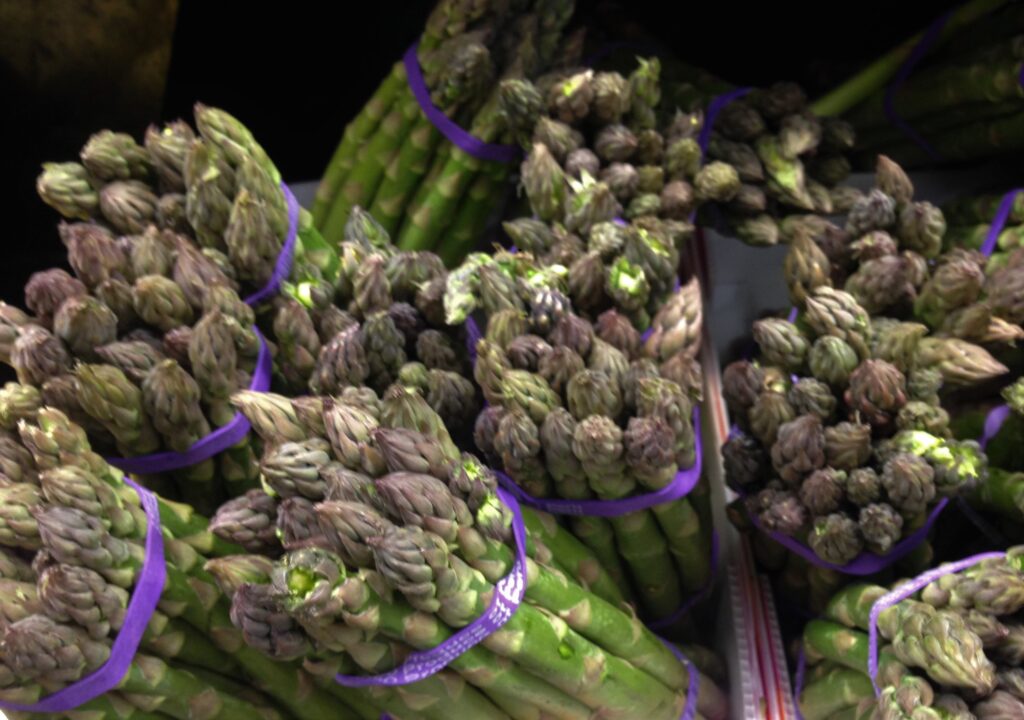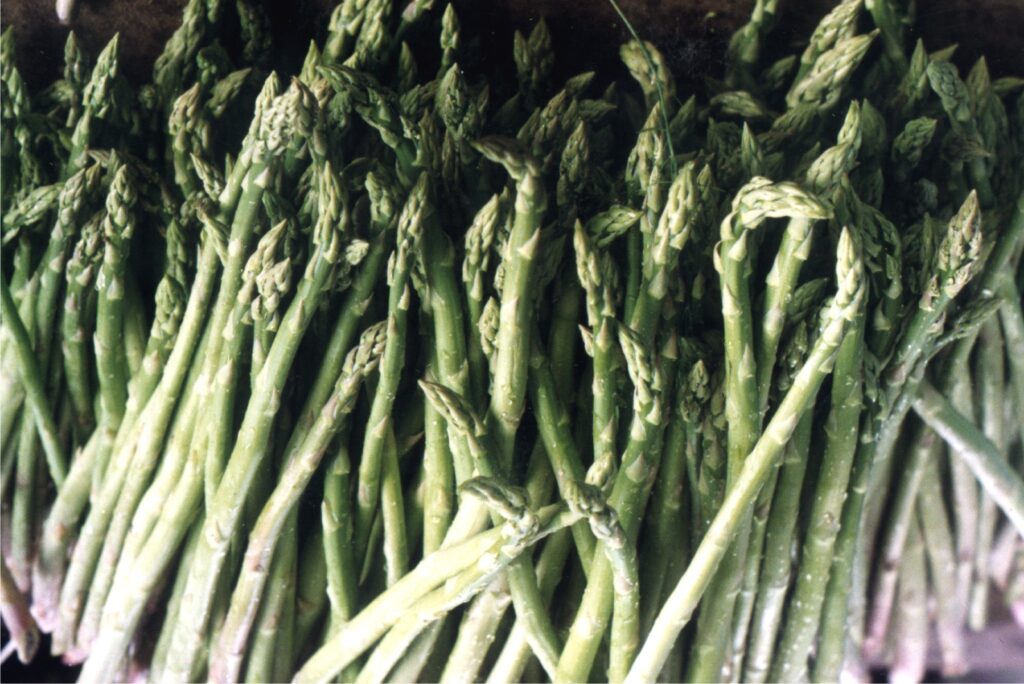Text and Photos by Henrylito D. Tacio
Asparagus, known in the science world as Asparagus officinalis, is an exotic, perennial herb whose potential for export has been overlooked until the late 1980s when it surfaced as one of the major promising dollar earners for the vegetable sector. Asparagus is produced primarily for the international market. It is grown for its shoots and spears, which are either cooked or processed.
The English word “asparagus” is derived from classical Latin, but the plant was once known in English as sperage, from the Medieval Latin sparagus. This term itself derives from the Greek spharagos or asparagos, and the Greek term originates from the Persian asparag, which means “sprout” or “shoot.”
Although it derives its name from the ancient Greeks, it was the Romans who were hooked on this vegetable. They documented detailed growing instructions, they enjoyed eating it in season, and they were the first to preserve it by freezing. There is a recipe for cooking asparagus in the oldest surviving book of recipes, Apicius’s 3rd century AD De re coquinaria, Book III.
Asparagus was first cultivated about 2500 years ago in Greece. The name is a Greek word, meaning stalk or shoot. The Greeks believed asparagus was a herbal medicine that, among other things, would cure toothaches and prevent bee stings.
Second-century physician, Galen, described asparagus as “cleansing and healing.” Claims for the medicinal benefits of asparagus persist to this day. The Romans became great lovers of asparagus and grew it in high-walled courtyards. In their conquests, they spread it to the Gauls and Germans, and from there, the rest of the world.
Originally, asparagus was used by ancient Greeks and Romans to relieve toothaches and prevent bee stings. The Elements of Materia Medica (1854), edited by a University of Pennsylvania professor, stated that asparagus was used as a popular remedy for kidney stones. He even referred to experiments, in 1739, on the power of asparagus in dissolving stones.
Often regarded as rare and expensive, asparagus can be a regular fare in the Filipino diet. “The trick is to plant them in your backyard,” suggests Ma. Angelo Sumilang in an article published in Philippine Star.
Unknowingly, asparagus production started in the country in 1989 yet. But since it was considered a temperate climate crop, the vegetable was grown only to such places as Baguio and Mountain Province. The introduction of new tropical varieties made it to be grown in other parts of the country.


Asparagus
Asparagus grows best in soil that is deep, loose, and light. It demands high fertility, plenty of organic matter, good drainage, and an abundant supply of moisture. It grows well in areas where rainfall is evenly distributed throughout the country like Marinduque, Oriental Mindoro, Bondoc Peninsula, Bohol, Sulu, Misamis Occidental, and the eastern parts of Cagayan, Isabela, and Nueva Ecija.
Asparagus also grows well in dry areas where water supply is constantly available. The desired average daily temperature of the area should be 53 degrees Fahrenheit to enhance the growth of the spears.
The period of harvesting and the cutting season differ in various sections of the country. The spears may be harvested at an earlier age where the growing season is long, relatively cool, and the rainfall is evenly distributed. Where the growing season is short and warm, spears should only be harvested after the crowns have had two full years of growth. Harvesting is usually done on the 13th month of operation.
Asparagus can be harvested for a period of 270 days within a year. While the seedlings are still young, the first harvest period could yield about 10 kilograms per day per hectare for 30 days. Cutting should then be stopped for a month and then resumed the following month for the second harvest. The yield could then be 20 kilograms per day per hectare for 60 days.
For the succeeding harvest periods, cutting could be done for three consecutive months followed by a month of rest. The average yield this time could be 40 kilograms a day per hectare.
Although the asparagus may remain fairly attractive in appearance for several days, its quality deteriorates fast at a warm temperature. It should, therefore, be sold within 12 to 24 hours after harvesting unless refrigerated.
When it has to be kept overnight without refrigeration, submerge the tied bundles almost to their tips in ice water.
Fresh asparagus may also be stored for a limited period. After cutting, pre-cool the spears at 40 degrees Fahrenheit. A high relative humidity of 95 percent should be maintained to prevent moisture loss.
According to Sumilang, asparagus reaches 10-15 years of maximum productivity.
What’s in asparagus, anyway? Plenty, nutritionists claim. Asparagus is a nutrient-dense food that is high in folic acid and is a good source of potassium, fiber, vitamin B6, vitamins A and C, and thiamin. Asparagus has no fat, contains no cholesterol, and is low in sodium.
Among vegetables, asparagus is reportedly the leading supplier of folic acid. A 5.3-ounce serving provides 60% of the recommended daily allowance for folacin, which is necessary for blood cell formation, growth, and prevention of liver disease.
Folacin has been shown to play a significant role in the prevention of neural tube defects, such as spina bifida, that cause paralysis, and death among babies.
Asparagus is also one of the richest sources of rutin, a drug that strengthens capillary walls.

